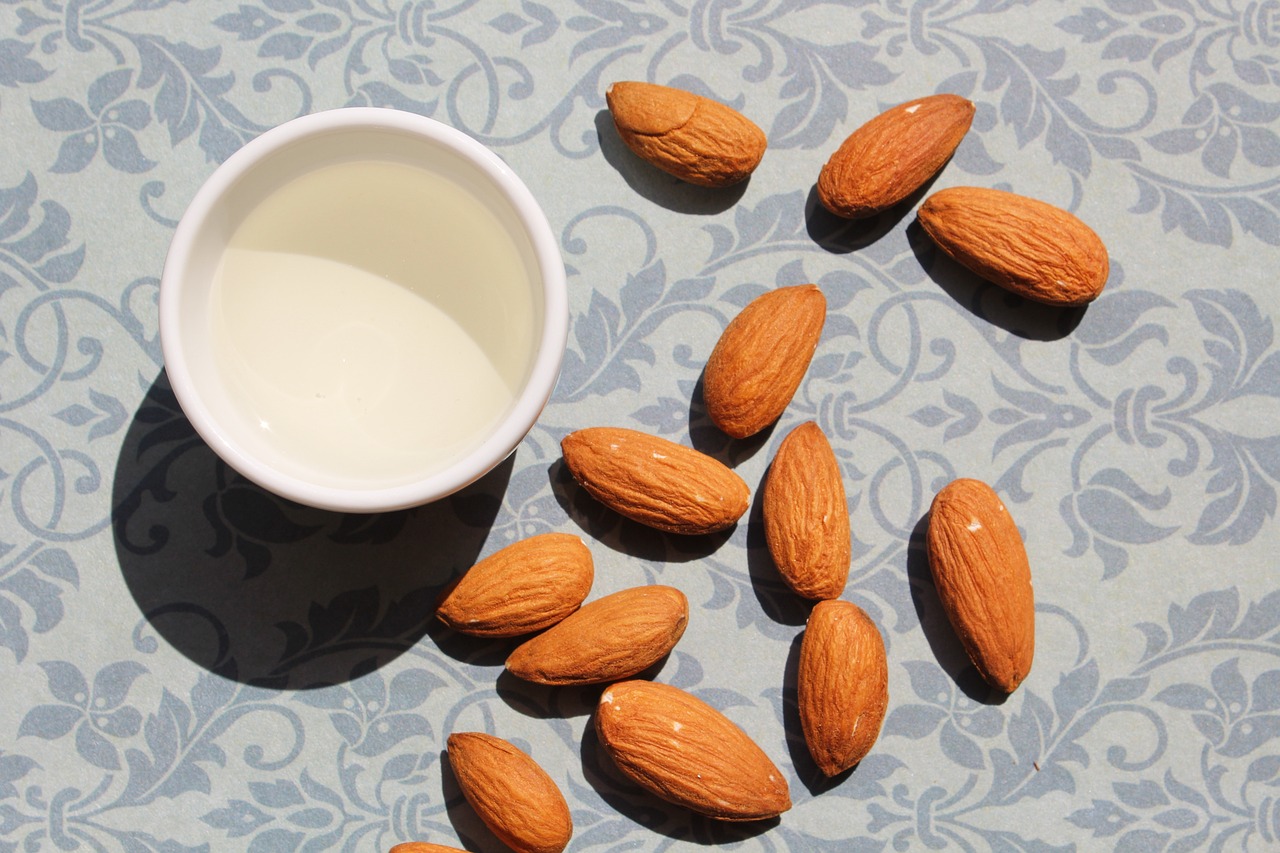Almonds
Almonds are a familiar and common type of nut, with two varieties: sweet almonds and bitter almonds, depending on the type of trees they come from. Sweet almonds are produced by a type of tree called Prunus amygdalus var. dulcis, while bitter almonds come from Prunus amygdalus var. amara. Sweet almonds are free from toxic compounds, while bitter almonds contain toxic compounds.
Differences Between Bitter Almond Oil and Sweet Almond Oil
Various natural oils are used for different purposes based on their types and components. Among these commonly used oils is bitter almond oil. Bitter almond oil is extracted from the fruits of the bitter almond tree, which is originally from the western regions of Asia and the northern parts of Africa. It is also widely cultivated in Turkey, Egypt, Tunisia, Morocco, and Spain.
Though it is difficult to differentiate between the fruits of sweet and bitter almonds, bitter almond fruits are wider and shorter than sweet almonds. Similarly, their oils also differ. Bitter almond oil is highly toxic and should be used with caution.
It is important to note that bitter almond oil contains some toxic and harmful substances. Therefore, it should be used with extreme caution, especially when used internally, and only in very small doses under medical supervision. Any increase in dosage can be harmful and even fatal at times. For this reason, bitter almond oil is not classified as a dietary supplement.
Benefits of Bitter Almond Oil for the Body
Despite its toxicity, bitter almond oil has several therapeutic properties that can be beneficial if used wisely and in small, specified doses. It is effective in fighting various infections and microbes, such as bacteria, viruses, and fungi. It also acts as a deworming agent, fever reducer, and relieves intestinal spasms. Additionally, it has diuretic properties, can cause diarrhea, and is used externally to relieve and numb pain.
The recommended method of use is to mix one drop of bitter almond oil with thirty milliliters of another oil. This mixture can be added to homemade creams or used as a vapor. However, pregnant women and children should avoid using it entirely, and it should not be used in excessive doses to avoid toxicity.
Components of Bitter Almond Oil
Bitter almond oil contains about 50% of essential components, including benzaldehyde, hydrocyanic acid, and glycoside amygdalin. The other 50% consists of monounsaturated fatty acids and other compounds such as vitamin E, proteins, zinc, potassium, and various other vitamins and minerals.
Extraction of Bitter Almond Oil
The extraction of bitter almond oil involves removing the shells from the almond seeds, crushing them, and then distilling the resulting powder to extract the oil. Hydrocyanic acid, one of the components of bitter almond oil, is toxic and lethal if ingested in its concentrated and raw form. Manufacturers of bitter almond oil eliminate this effect by using heat to destroy the toxicity of this compound. Some countries prohibit the sale of this oil without refining it to reduce its toxicity.
Benefits of Sweet Almond Oil for the Face and Skin
Sweet almond oil is widely used in skincare products due to its numerous benefits. On the other hand, bitter almond oil is primarily used for its pleasant aroma.
Sweet almond oil has several benefits for the skin and face, including:
- Nourishing and Moisturizing: Sweet almond oil provides radiance, vitality, and smoothness to the skin. It is suitable for children as well. The oil nourishes and moisturizes skin cells, giving it a clear and healthy glow. Warm the oil and massage it into the skin, preferably after a shower for better absorption.
- Antioxidant Protection: Sweet almond oil contains a good amount of vitamin E, a powerful antioxidant. It protects the skin from oxidative damage and sun exposure.
- Deep Cleansing: Sweet almond oil penetrates the skin easily, helping to remove dirt and dead skin cells from pores and hair follicles. This makes it useful in preventing acne, pimples, and blackheads.
- Makeup Removal: It can be used to remove makeup residues, especially around the eyes. Apply a small amount of oil on a cotton pad and gently wipe the face. Leave it on for about two minutes before wiping off gently.
- Reducing Dark Circles: Regular application of sweet almond oil around the eyes before bed can help reduce dark circles within two weeks.
- Anti-inflammatory: Sweet almond oil can treat fungal and bacterial skin infections.
- Skin Brightening: It helps in lightening the skin, evening out the skin tone, removing dark spots, sunburn marks, and pigmentation, and reducing redness.
- Treating Skin Conditions: It can be used for eczema and psoriasis as it is an effective moisturizer and helps relieve the itching associated with these skin conditions.
In conclusion, both sweet and bitter almond oils have distinct properties and uses. Sweet almond oil is beneficial for skincare and is widely used for its nourishing and moisturizing properties, while bitter almond oil, despite its toxicity, has therapeutic benefits when used with caution.
